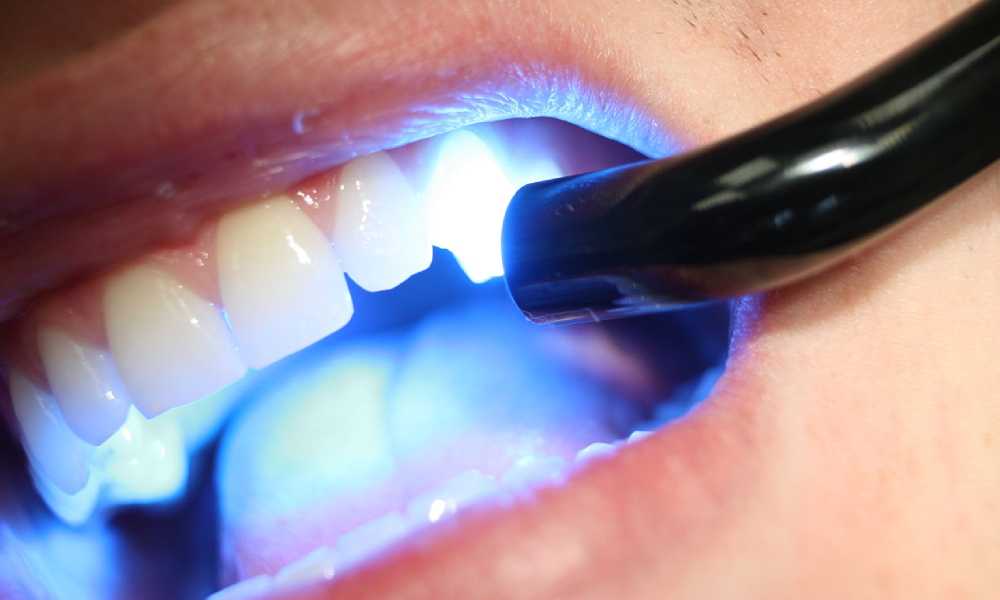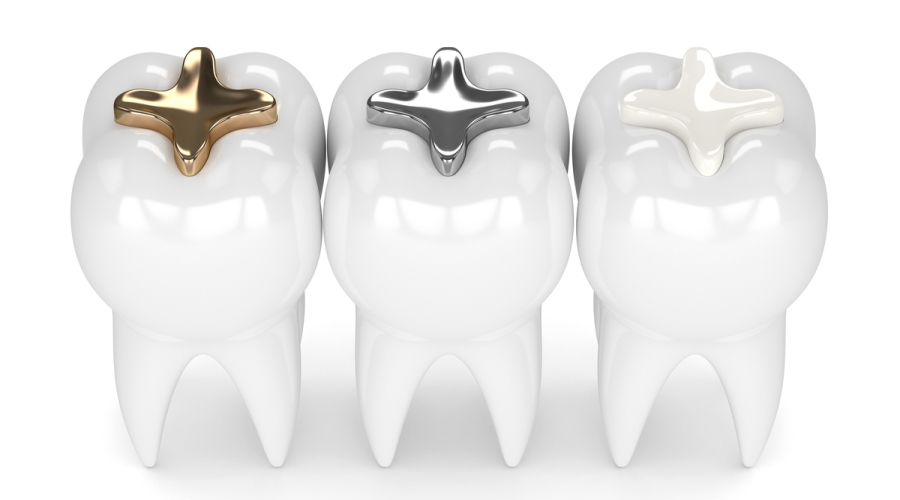Laser Tooth Filling, laser tooth filling is the latest development using modern technology in the post-twenty-first century era due to the many problems resulting from different filling methods, which had to be avoided to satisfy the patient’s desire for the desired aesthetic appearance and enjoy healthy and bright white teeth. In a time when striving for a good overall appearance has become a top priority, laser tooth filling technology has received great attention and a positive response, which we will learn about in detail in this article.

Laser Tooth Filling
Laser tooth filling is a technique in which light-curing tooth fillings, also known as composites, are used. Composites are bonding or restorative materials called resins. Laser fillings are a type of filling used by dentists to solve various dental problems such as cavities, cracks, and others. The advancement of technology and scientific progress played a significant role in their emergence at the end of the last century.
The idea involves using a device that emits light and radiation onto the affected area where the material is filled, causing the material particles to bond completely with the teeth and fix firmly for an extended period, preventing them from falling out in the long run. Let’s learn more about the recently used laser fillings and their components in the following lines.
Laser fillings consist of 3 main components: a mixture of resin and non-organic compounds that work to reflect light and add shine and brilliance, these compounds can be made of glass, quartz, or silica. The last component of laser fillings is the binding materials that increase the bonding strength between the resin and the non-organic, often glass-based, compounds.
Tooth decay problems and lack of oral hygiene result in numerous damages that must be addressed as soon as possible to avoid severe complications that may occur. Consequently, dentists always resort to treatment using different fillings that work by filling the gaps resulting from cracks or sealing damaged protrusions after cleaning and removing decay or damage. Therefore, it is essential to understand the differences between the most commonly used types of fillings to determine the suitable one after consulting the doctor.
Dental fillings used vary in terms of materials, effectiveness, and stability. These fillings are made from various materials such as copper, plastic, porcelain, glass, mercury, silver, or composite resin. Therefore, it is necessary to know the differences between them, as the doctor chooses the most suitable filling for each patient based on the expansion area resulting from the removal of decay, strength, and location of the tooth to be filled. We will mention these differences as follows:
There are types of regular fillings that are used, such as gold, silver, glass, and porcelain fillings. These fillings have advantages and disadvantages that vary from one type to another, but there are some points that distinguish regular fillings:
Some may wonder how is laser tooth filling done? Laser filling requires multiple steps and continuous follow-up with the dentist due to the importance of constant cleaning of the filling materials and teeth. The five steps for light-curing fillings will be explained as follows:
“Experience the advanced and most comfortable tooth filling with our laser filling technology at The Dental Center.”
There are several factors that help extend the lifespan of a laser filling; these are regular brushing with a suitable toothpaste containing the appropriate amount of fluoride to prevent cavities, maintaining oral hygiene and cleaning the filling by removing any food particles continuously after every meal, avoiding smoking, which has a negative impact on the disintegration and falling out of the filling, in addition to regular follow-up with the dentist every 3 months to ensure the condition of the filling. All these factors contribute to the safety of the laser filling for more than 7 years, with the typical lifespan ranging from 4 to 5 years, and some fillings lasting more than 15 years, such as gold and porcelain fillings.

How long does a laser filling last?
During the laser filling procedure, the patient does not feel any pain due to the anesthetic effect. However, after the anesthesia gradually wears off, severe pain begins that many cannot tolerate. This is due to extreme sensitivity when exposed to cold air while breathing or drinking hot and cold beverages, pressure on the filled tooth when eating solid foods or brushing teeth, as well as unbearable gum pain. The pain is continuous, not only in the filled tooth but also in the surrounding teeth. There are reasons for this pain, which we will learn about in the following points:
There are different instructions for treating the various causes of pain after laser filling, and these instructions can be summarized in the following points:
From what has been mentioned, we can conclude that there are types of pain after laser filling, and these types can be classified as follows:
After mentioning the different types of pain, their causes, and how to treat these causes, we hope that the importance of paying attention to any pain and taking appropriate and prompt action by consulting the dentist when experiencing any unusual symptoms has been clarified. For more information on pain after root canal filling, click here.
Yes, during the various steps of laser filling, the patient must be given anesthesia, as the procedure is carried out in multiple sessions. Among the steps in the filling process is the use of a drill to clean the area where the filling will be placed from any traces of decay and level the tooth surface after adding the filling layers. The patient cannot tolerate this, so anesthesia is necessary for the dentist to perform the laser filling procedure properly and with high accuracy to ensure the stability of the filling and prevent it from falling out in the long run.
Unfortunately, cavities can return due to neglecting oral hygiene and the accumulation of food debris between the teeth, which allows the bacteria in the mouth to multiply, feeding on the sugars in food and producing acids that erode the teeth and cause cavities. This can also happen to any previously filled tooth or tooth if it is not properly cared for or the teeth are not cleaned regularly on a daily basis, as the filling does not protect the teeth from cavities. Therefore, it is essential to brush teeth regularly.
Click here to learn more about the symptoms of tooth decay in children.
Among the different techniques used in treating tooth decay is the use of fillings, including laser and platinum fillings. Each has its own techniques, advantages, and disadvantages. The comparison between them can be summarized in the following points:
| Laser Filling | Platinum Filling |
| Low cost | Low cost |
| The filling is firmly and strongly fixed in the tooth tissues due to the ease of the technique, as the light rays emitted from the laser device are used on the tooth to be filled | The filling does not fix firmly with dental implants, as the dentist needs to enlarge the gaps in the teeth for proper fixation. |
| There is a possibility of cavities if oral hygiene is neglected, as laser fillings are made of a mixture of resin and silica, quartz, or glass materials | Low possibility of developing new cavities, as platinum fillings are made of tin, mercury, silver, and copper |
| Improves the overall appearance as the filling color matches the tooth color, but the tooth color may change over time | Affects the overall appearance due to the difference in color between the filling and the teeth |
| Requires continuous follow-up with the dentist | Fewer sessions and no need for frequent visits to the dentist |
| Does not last long in the tooth cavity | Lasts for an extended period in the tooth cavity |

Advantages of Laser Tooth Fillings
Laser tooth fillings are a popular cosmetic technique currently used to treat dental problems such as cavities, cracks, and others. They have many advantages that make them a more preferred option by patients, which we will explain as follows:
Get rid of the pain and the annoying experience of traditional filling, and discover laser filling at The Dental Center.
Despite the many advantages of laser filling that we have discussed previously in the article, there are some drawbacks that can be mentioned as follows:
Many dental patients opt for laser tooth filling due to its simple cost and the many advantages it offers, as presented in the previous paragraphs. When asked about the cost, it is difficult to determine accurately as prices vary depending on each dentist, location, quality, efficiency, and devices used. The price of laser tooth filling at our dental care center starts from 300 Egyptian pounds, and for more information about the prices of nerve filling for children, read this article.
After the laser filling procedure, the dentist provides many instructions, especially for the next few hours. We will mention these tips due to their importance in ensuring good fixation of the filling:
Eliminating dental tartar easily, the formation of tartar between the layers of the gums or on its surface is one of the most common oral diseases that most
Dental Cosmetic Center, Dental cosmetics is one of the most searched terms on Google, the world’s most famous and widely used search engine. Therefore,
The Difference Between Dental Veneers and Hollywood Smile, Dental veneers and Hollywood smile are techniques used in fixing various dental flaws and solving